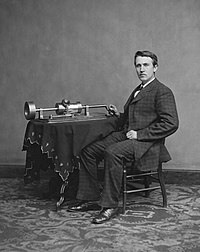
Photo from wikipedia
AIM Several recently developed frameworks aim to assess the value of cancer treatments, but the most appropriate metrics remain uncertain. METHODS We use data from the Patient Access to Cancer… Click to show full abstract
AIM Several recently developed frameworks aim to assess the value of cancer treatments, but the most appropriate metrics remain uncertain. METHODS We use data from the Patient Access to Cancer care Excellence Continuous Innovation Indicators to examine the relationship between hazard ratios (HRs) from clinical trials and dynamic therapeutic value accumulating over time. RESULTS Our analysis shows that HRs from initial clinical trials poorly predict the eventual therapeutic value of cancer treatments. CONCLUSION Relying strongly on HRs from registration trials to predict the long-term success of treatments leaves a lot of the variance unexplained. The Continuous Innovation Indicators offer a complementing, dynamic method to track the therapeutic value of cancer treatments and continuously update value assessments as additional evidence accumulates.
Journal Title: Future oncology
Year Published: 2017
Link to full text (if available)
Share on Social Media: Sign Up to like & get
recommendations!